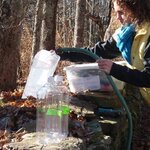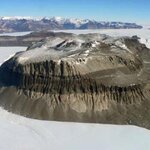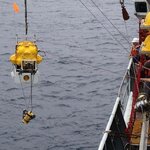Geology

The most comprehensive analysis to date of a series of earthquakes that included a 4.8 magnitude event in East Texas in 2012 didn't find evidence that the earthquakes were caused by wastewater injection - and they the difficulty of trying to claim earthquakes were caused by human activity, at least using currently available subsurface data.
The study was published April 13 in the Journal of Geophysical Research: Solid Earth, and focused on an earthquake sequence near Timpson, Texas. Activists had claimed the earthquakes were due to wastewater injection related to oil drilling. To determine…

Avalanches are the primary hazard for winter back country recreational trekkers and cause numerous deaths and injuries annually.
These snowy adventures have grown in popularity, leading people to forget that just because you paid a professional guide does not mean there is no risk. A new study in Wilderness and Environmental Medicine explored the risk of avalanche accidents and found a strong correlation with great risk of avalanches; group size. Traveling in groups of four or more people carried a higher relative avalanche risk than for individuals or groups of two.
Researchers…

Dramatic videos created by environmental activists shows tap water being set on fire. In some cases, they were clear hoaxes, in others it turned out to be methane unrelated to drilling. Yet regardless, the belief is that natural gas fracturing (fracking), or conventional extraction, can reach drinking water. Scientists disagree, though conceding that anything can happen in the right circumstances, without it being indicative of the process.
Natural gas consists primarily of methane, a greenhouse gas that's 23 times more potent than carbon dioxide, but far shorter-lived. As CO2 emissions have…

Traces of volcanic ash originating from islandic volcanoes have been found in the sediments of Laker Tiefer See in the Nossentiner-Schwinzer Heide natural park in Mecklenburg-Vorpommern.
An international team of geoscientists identified traces of in total eight volcanic eruptions on Island of which six could be precisely identified. The oldest eruption occurred 11,400 years ago and the youngest, from 1875, has been described in historical documents.
Seasonally laminated lake sediments represent ideal geoarchives for reconstructing natural climate variability in the past. Achim Brauer from…

Antarctica was once downright balmy, lush with plants and lakes, but not any time recently. Despite all of the climate change and global warming of the last few million years, the continent has been a barren, cold desert of ice.
What might we expect there in the future as Earth's atmospheric concentration of carbon dioxide grows? More of the same. Antarctica's ancient lake deposits have remained frozen for at least the last 14 million years, suggesting that the surrounding region, the East Antarctic Ice Sheet, or EAIS, has likewise remained intact.
The work adds new support for the idea…

Pioneering new research has shed new light on the causes behind an 'ice-age' that took place on Earth around 170 million years ago - evidence of a large and abrupt cooling of the Earth's temperature during the Jurassic Period, which lasted millions of years.
The scientists found that the cooling coincided with a large-scale volcanic event - called the North Sea Dome - which restricted the flow of ocean water and the associated heat that it carried from the equator towards the North Pole region.
The team suggest that it is this volcanic event, preventing the ocean flow, rather than a change in…

The intensity of earth's magnetic field has been weakening in the last couple of hundred years, leading some to claim that its polarity might be about to flip.
But the field's intensity is coming down from an abnormal high rather than approaching a reversal. And despite Doomsday prophecies stating otherwise, humans have lived through dips in the field's intensity before. Linking reversals in the more distant past to species extinctions is just speculation that can't be proved or disproved, which makes them ideal fodder for scary stories about nature.
Earth's magnetic poles have reversed…

Researchers have attempted to measure all the material leaving and entering a mountain range over millions of years and discovered that glacial erosion can, under the right circumstances, wear down mountains faster than plate tectonics can build them.
A study of the St. Elias Mountains on the Alaskan coast by researchers from The University of Texas at Austin, University of Florida, Oregon State University and elsewhere found that erosion accelerated sharply about one million years ago.
The study adds insight into a longstanding debate over the balance of climate and tectonic forces that…

Oklahoma is in the news a lot for earthquakes because of activist claims about hydraulic fracturing, the modern process of natural gas extraction.
In reality, the earthquakes may be linked to conventional drilling but the numbers are nothing out of the ordinary - and those are nothing compared to just southern California, which has 30 every day. That's due to the San Andreas Fault system.
Cities that line the fault, like Los Angeles and San Francisco, have been fortunate for the last 100 years - there hasn't been a major destructive earthquake of magnitude 7.5 or more -- but it's…

Scientists have nearly completed the first map of the mantle under the tectonic plate that is colliding with the Pacific Northwest and putting Seattle, Portland and Vancouver at risk of the largest earthquakes and tsunamis in the world.
The new report describes how the movement of the ocean-bottom Juan de Fuca plate is connected to the flow of the mantle 150 kilometers (100 miles) underground, which could help seismologists understand the forces generating quakes as large as the destructive Tohoku quake that struck Japan in 2011 and led to the tsunami that caused the issues at the Fukushima…